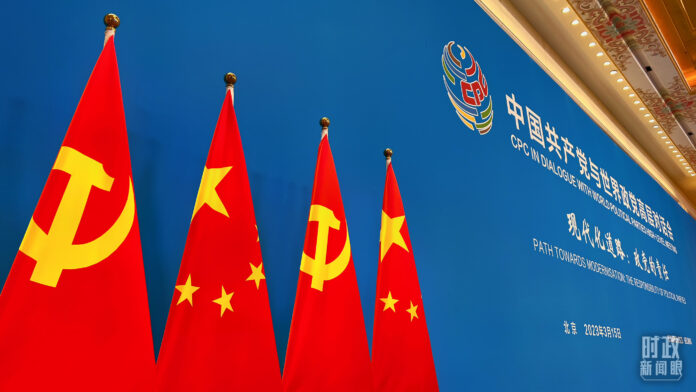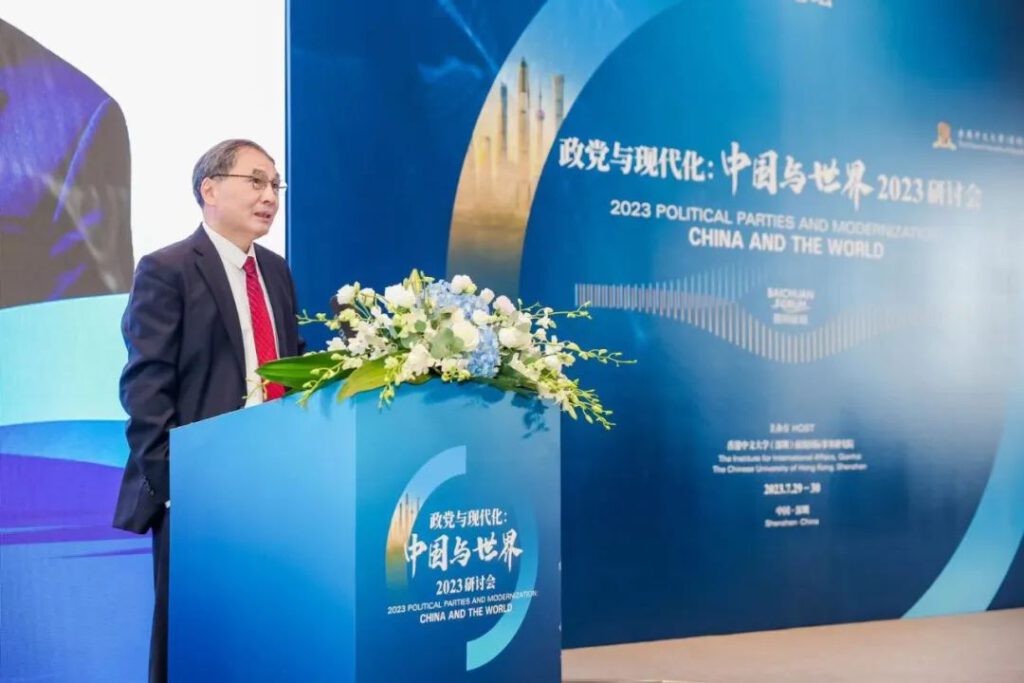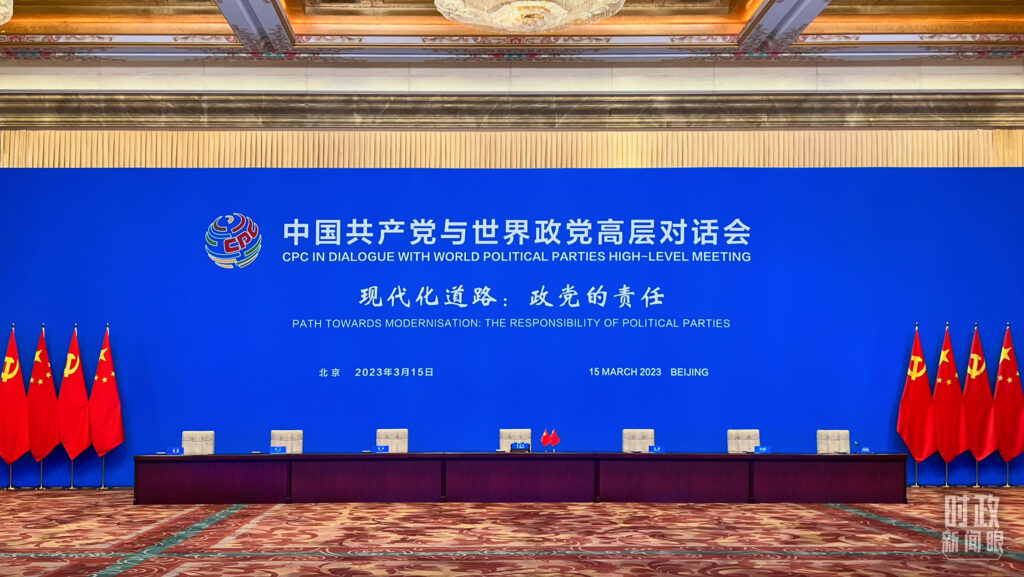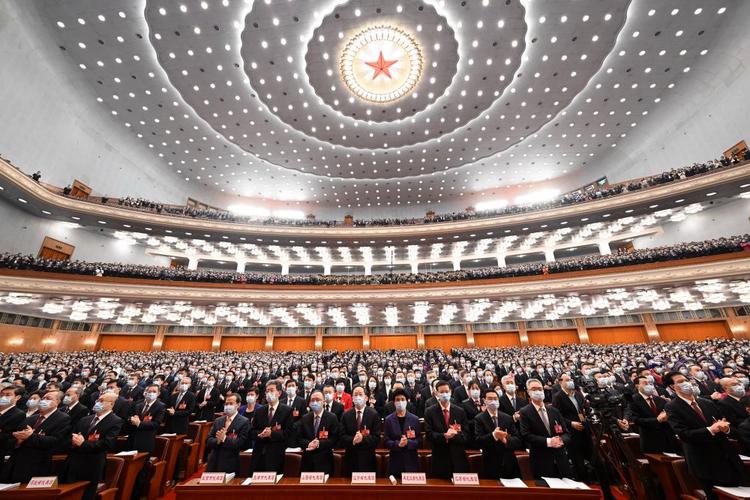
On July 29-30, the forum “Political Parties and Modernization: China and the World 2023 Seminar” was held in Shenzhen. Yung-nien Cheng, Director of the Advanced Institute of Global and Contemporary China Studies, at the Chinese University of Hong Kong (Shenzhen), delivered a speech on the relevant theme.

Why do we need to discuss political parties and modernization?
Political parties are a product of modernization, and they are deeply influenced by modernization. The West experienced a long period of absolute authoritarianism in the early modern period. It was during this period that most of the basic state systems of the West were established.
Later, party politics emerged along with the modernization of the West, especially the economic development based on commercialization and industrialization. Economic development led to the diversification of society, and the diversification of interests led to the emergence of political parties.
Historically, modernization has first manifested itself as an idea, a deviant idea, mainly in the West from the Renaissance to the Enlightenment. The Renaissance destroyed the thought system based on religious theology in the West, and opened the modern thought system based on rationality, while the Enlightenment pushed rationality to the supreme position. As the traditional society was destroyed, a new social order had to be established. Therefore, since modern times, political parties have become the main political force to establish this new order.
However, since the evolution of the West from traditional elite democracy to mass democracy, especially since the age of social media, the living environment of political parties has changed dramatically. Western political parties are a product of the modernization of the state; they are subordinate to the state system and cannot reside above any state system. Once it loses its competitiveness, political parties lose their basis of existence. It is therefore not difficult to understand that today, in most of the West, political parties are in a state of “survival of the fittest” competition with other organizations in society.
The study of political parties in post-development countries is even more relevant. In the 1960s, Harvard Professor Huntington wrote a book entitled Political Order in Changing Society, in which he pointed out that for the vast number of developing countries, the main problem of politics is not the establishment of a liberal democratic order but how to establish a stable political order. Or rather, for developing countries, the question was whether there was an order, not what kind of order there was.
After World War II, with decolonization, developing countries gained political independence, but this did not mean that they established a stable political order. Many countries lived with the legacy of the colonial system for a long time after gaining independence. Textually, they accepted Western-style constitutionalism, the rule of law, multi-party politics, free association, free media, and so on. But empirically, these institutions never moved from text to practice. In other words, a stable political order was never established in many developing countries. In many countries, this situation persists to this day, and some have even become failed states.

The significance of the Chinese experience
As far as the relationship between political parties and modernization worldwide is concerned, the Chinese experience is very rare and valuable. But this valuable experience has never been summarized because many people have never done research on the CCP out of ideology.
The traditional Chinese state, which had existed for thousands of years, was weak in the face of the modern, highly organized power of the Western state. China thus began the process of modernization. The Chinese elite of the time looked for different ways to save the country, from military, to commerce, to industry, to education. But all these proved to be insufficient to save China, so people turned to the political system.
Early political figures, especially Sun Yat-sen, also tried to reconstruct the country’s political system by adopting Western methods, including the presidential system, the cabinet system, and the multi-party system, but all of them failed. Drawing on the experience of the Soviet Union at the time, Sun finally found the Chinese way of “building the country by the party” and “ruling the country by the party”. This path has not changed structurally from Sun Yat-sen to the Kuomintang to the CPC, but only in terms of strategy and the people it relies on.
This is also mostly due to cultural factors. Since the formation of the Chinese state in the Qin and Han dynasties, the state has always transcended various socio-economic factors and has always existed as a top-level structure. The concept of “sovereignty” in the modern West and the concept of the Marxist–Leninist state in the Soviet Union at that time contributed to the rebirth and transformation of this structure. In other words, as a result of this transformation, a new political order has emerged in China, but the essence of this order remains cultural.
Unlike in the West, political parties in China are not one of the social systems, but a top-level structure that transcends all social systems. In terms of function or responsibility, political parties are not only about governance but also about development.
Empirically, the CPC has indeed been consolidating the governing foundation. However, the CPC is not just “survival of the fittest” like the Western political parties, it is guiding and leading the development of all other fields on top of consolidating its governing foundation. The CPC is not a “party of adaptation”, but a party of leadership.
Since the reform and opening up, only a few countries in the world, such as China, have simultaneously achieved the “three sustainability”, i.e., sustainable economic development, sustainable social stability, and sustainable institutional leadership.

So what does the concept of “Chinese-style modernization” mean in terms of comparative modernization?
First, China emphasizes that different civilizations have different understandings of the meaning of modernization and different contents and different ways of pursuing it, therefore there exists a diversity of modernization, such as Chinese-style modernization, European-style modernization, American-style modernization, and Japanese-style modernization, etc.
Secondly, empirically, modernization that is in line with one’s civilization, culture, and national conditions tends to be successful, while modernization that is copied from the modernization models of other countries tends to be a failure. China hopes that all countries will find a modernization model that is in line with their civilization, culture, and national conditions.
Thirdly, China’s emphasis on “Chinese-style modernization” indicates that China will not, like some Western countries, push its model of modernization outward and impose its modernization model on other countries.
Fourthly, in the pursuit of modernization, China advocates a dialogue of civilizations, in which civilizations learn from each other and work together to promote the modernization of the world.
(Source: QIIA)



